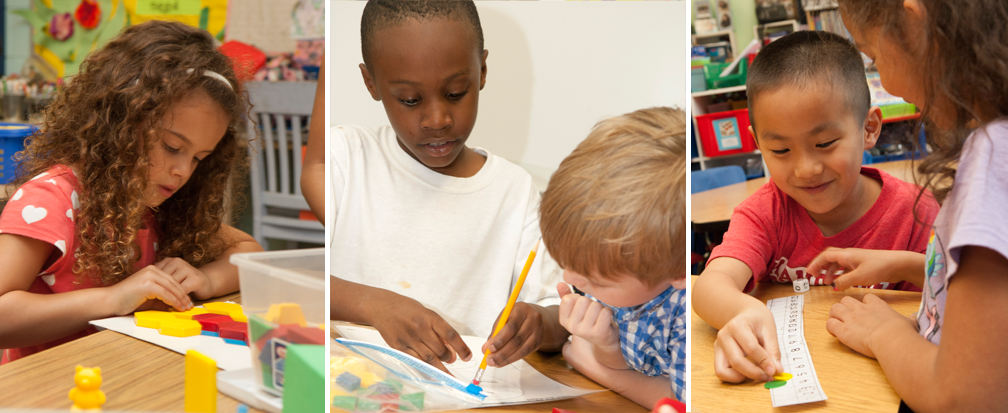Name that Number
Materials: 4 cards each of numbers 0-10 and 1 card each of numbers 11-20
Number of Players: 3 or 4
A player shuffles the deck and places five cards face-up on the playing surface. This player leaves the rest of the deck facedown and then turns over and lays down the top card from the deck. The number on this card is the number to be named.
In turn, players try to (re)name the number on the set-apart top card by adding or subtracting the numbers on two of the five face-up cards.
A successful player takes both the two face-up cards and the number-named top card. A successful player also replaces those three cards by drawing from the top of the facedown deck. Unsuccessful players lose their turns. But they turn over and lay down the top card from the facedown deck, and the number on this card becomes the new number to be named.
Play continues until all facedown cards have been turned over. The player who has taken the most cards at the end wins.
Example:
Mae's turn:

The number to be named is 6. It may be named with 4+2, 8-2, or 10-4.
Mae selects 4+2. She takes the 4, 2, and 6 cards. She replaces the 4 and 2 cards with the top two cards from the facedown deck and then turns over and lays down the next card to replace the 6.
Mike's Turn:

The new number to be named is 16. Mike can't find two cards with which to name 16, so he loses his turn. He also turns over the next card from the facedown deck and places it on top of 16, and the number on this card becomes the new number to be named.
Play continues as before.
Game Variations: If children are finding the game difficult, increase the number of face-up cards.
Use any combinations of two or more numbers and all operations. For example, Mike could have named 16 as follows:
10+7-1
10+12-7+1
8+12-10+7-1
Children can experiment by using different numbers of face-up cards.



